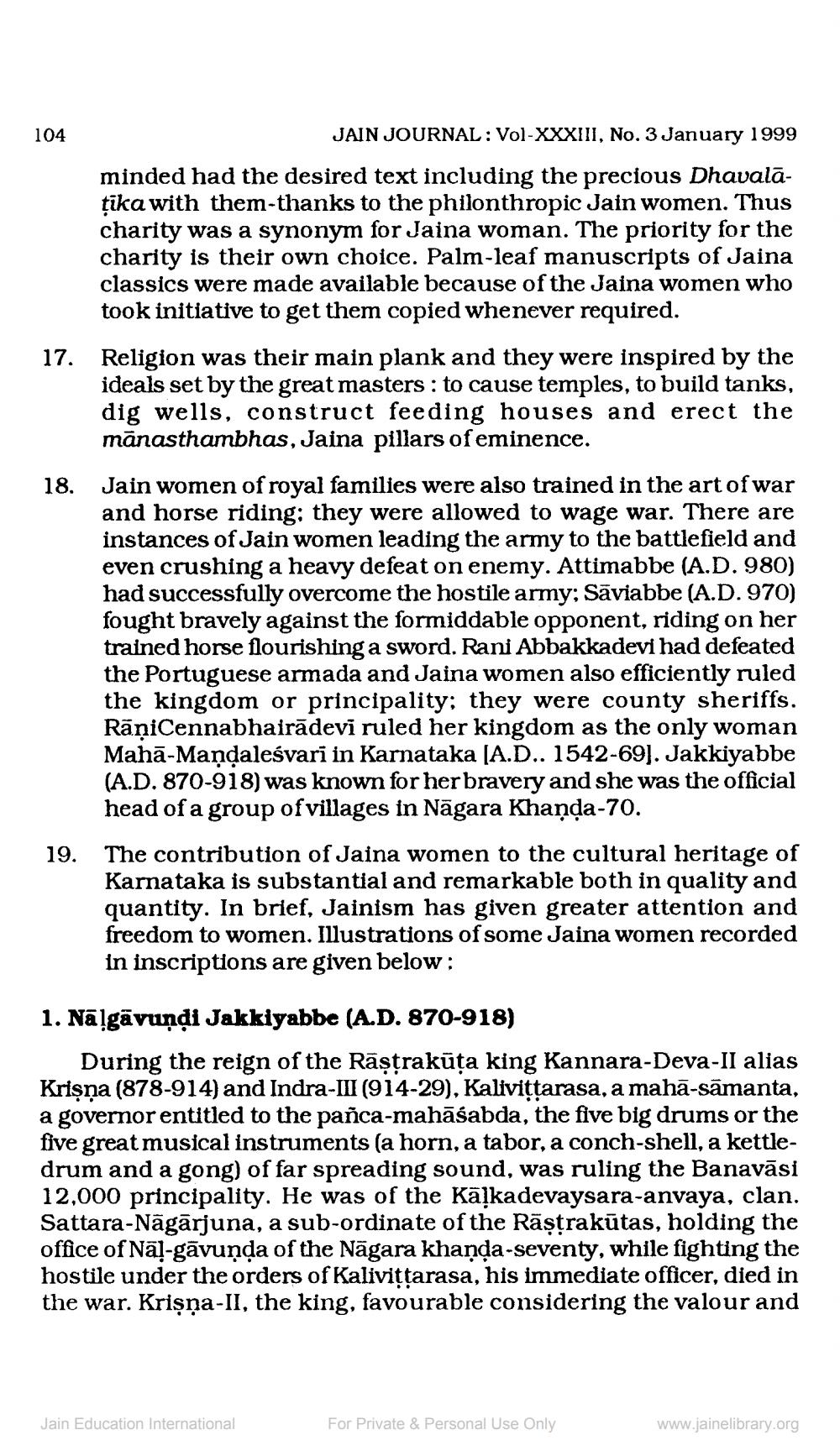________________
104
JAIN JOURNAL : Vol-XXXIII, No. 3 January 1999 minded had the desired text including the precious Dhavalāţika with them-thanks to the philonthropic Jain women. Thus charity was a synonym for Jaina woman. The priority for the charity is their own choice. Palm-leaf manuscripts of Jaina classics were made available because of the Jaina women who took initiative to get them copied whenever required.
17.
Religion was their main plank and they were inspired by the ideals set by the great masters : to cause temples, to build tanks, dig wells, construct feeding houses and erect the mānasthambhas, Jaina pillars of eminence.
18.
Jain women of royal families were also trained in the art of war and horse riding; they were allowed to wage war. There are instances of Jain women leading the army to the battlefield and even crushing a heavy defeat on enemy. Attimabbe (A.D. 980) had successfully overcome the hostile army; Sāviabbe (A.D. 970) fought bravely against the formiddable opponent, riding on her trained horse flourishing a sword. Rani Abbakkadevi had defeated the Portuguese armada and Jaina women also efficiently ruled the kingdom or principality; they were county sheriffs. RāņiCennabhairādevi ruled her kingdom as the only woman Mahā-Mandaleśvari in Karnataka (A.D.. 1542-69). Jakkiyabbe (A.D. 870-918) was known for her bravery and she was the official head of a group of villages in Nāgara Khaņda-70. The contribution of Jaina women to the cultural heritage of Karnataka is substantial and remarkable both in quality and quantity. In brief, Jainism has given greater attention and freedom to women. Illustrations of some Jaina women recorded in inscriptions are given below:
19.
1. Nāgāvuņņi Jakkiyabbe (A.D. 870-918)
During the reign of the Rāștrakūta king Kannara-Deva-II alias Krişņa (878-914) and Indra-III (914-29), Kaliviţtarasa, a mahā-sāmanta, a governor entitled to the pañca-mahāśabda, the five big drums or the five great musical instruments (a horn, a tabor, a conch-shell, a kettledrum and a gong) of far spreading sound, was ruling the Banavāsi 12,000 principality. He was of the Kāļkadevaysara-anvaya, clan. Sattara-Nāgārjuna, a sub-ordinate of the Rāştrakūtas, holding the office of Nal-gāvunda of the Nāgara khanda-seventy, while fighting the hostile under the orders of Kaliviţtarasa, his immediate officer, died in the war. Krişna-II, the king, favourable considering the valour and
Jain Education International
For Private & Personal Use Only
www.jainelibrary.org




